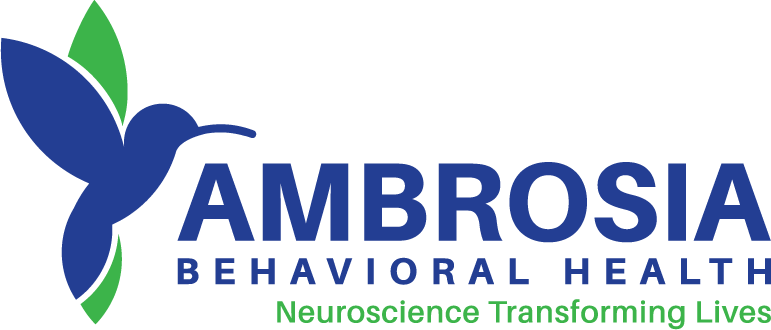Methamphetamine
Meth is one of the most addictive and destructive illegal drugs. Continued use will render the user unable to sustain activity, causing a harsh crash. The effects on personality can be just as severe as the physical effects. Overcoming methamphetamine addiction safely requires medical rehab care from experienced professionals such as those at Ambrosia Treatment Center with locations in West Palm Beach, Port St. Lucie and Singer Island, Florida.
Street Names
Crank, Chalk, Crystal, Fire, Glass, Go-Fast, Ice, Meth & Speed
Common Forms
White powder or pill; crystal meth looks like pieces of glass or shiny blue-white ‘rocks’
Common Ways Taken
Swallowed, Snorted, Smoked & Injected
Methamphetamine Addiction Facts
Health Effects of Meth Use
Meth is dangerous. The drug is chemically similar to amphetamine, a central nervous stimulant prescribed to increase performance and memory. It is fast acting and high-jacks key areas of the brain within seconds.
Some of the many, serious health effects include:
- Irregular heartbeat
- Heart failure
- Mood disturbances
- Violent, aggressive, paranoid behavior
- Confusion
- Insomnia
- Increased body temperature
- Loss of appetite & malnourishment
- High blood pressure
- Nervousness or anxiety
- Psychosis
- Hallucinations
- Convulsions
- Unusually active
Demographics
Meth addiction is a growing problem in rural areas. In fact, the Midwest accounts for nearly 90% of all drug cases, with Oklahoma leading the nation in both meth labs and arrests.
The drug can be found across various demographics, especially:
- High school and college students and college athletes (ages 14+)
- Blue-collar workers
- Men and women (equally) in their 20’s and 30’s who are jobless
Age in Years Usage by Percentage 18-23 24% 24-30 35% 31-40 19% 41+ 6%
How Loved Ones Can Help With Methamphetamine Addiction
If you suspect your loved one is using meth, arm yourself with various ways to help them overcome their addiction. Because meth addiction is difficult to handle, we have listed ways both you and your loved one can recover.
1. Know the Signs
Beyond the paraphernalia, meth is notorious for quickly altering the users physical appearance, including:
- Skin sores (from picking)
- Hair loss
- Decaying teeth
- Strange sleep patterns
- Engages in obsessive and repetitive tasks
- Incessant talking
- Dilated pupils
- Exaggerated mannerisms
- Excessive sweating
2. Research Treatment Facilities
Treatment facilities give your loved one the physical, mental and spirutal tools they need to overcome their addiction in a supervised and supported manner. Even if your loved one has been to treatment before, always have a solution ready.
3. Hold An Intervention
By confronting your loved one in a calm, collected way, an intervention serves as a foundation for your new relationship and increases the chance that a reluctant individual will get the treatment they need.
4. Set Boundaries
Even if your loved one doesn’t enter treatment, it does not mean the intervention was a failure. The intervention serves as a way to set boundaries so you will no longer enable their addiction. Providing food, shelter or money often only helps fuel the addiction. Support the recovery, not the addiction.
Read the Stories Of Recovery
Frequently Asked Questions
Stages of the Meth Experience
1. The Rush
The rush is the initial feeling when snorting, smoking or injecting meth which can last up to 30 minutes. The physical response includes accelerated heartbeat, metabolism and blood pressure.
2. The High
The second stage commonly results in increased energy, exaggerated mannerisms and obsessive or argumentative aggressions towards an insignificant item (such as digging). The high can last four to sixteen hours.
3. The Binge
A binge is uncontrolled or repeated use of any drug (including alcohol) driven by the urge to maintain the high by continuously using more. The longer the binge lasts, the more mentally and physically hyperactive the abuser becomes. Each time, the rush becomes fainter and eventually is lost for good. A binge can last anywhere between three to fifteen days.
4. Tweaking
The tweaking stage is the most dangerous. The initial rush can no longer be felt, even though the cravings for meth are still intense. A common side effect is scratching of the skin and feeling like bugs are crawling underneath the skin. Additionally, appetite, sleep and clarity are often gone. The abuser is in a psychotic state, seeing and hearing things that no one else can perceive. Abusers can become harmful to themselves and others during this stage.
5. The Crash
The crash is when the body shuts down after days of no rest or food, unable to cope with the overwhelming drugs digested. The crash typically involves one to three days of sleep, producing a debilitating hangover.
Methamphetamine is taken orally, smoked, snorted, or dissolved in water or alcohol and injected. Smoking or injecting the drug delivers it very quickly to the brain, where it produces an immediate, intense euphoria. Because the pleasure also fades quickly, users often take repeated doses, in a “binge and crash” pattern.
Meth is composed of over 10 toxic chemicals and exposure to these chemicals can be fatal. Crystal meth can cause permanent brain damage that may be irreversible even once the drug is stopped. Areas of the brain responsible for emotion, memory, verbal learning and motor skills are altered with long-term meth use.
Meth use can cause irreversible physical harm to the body:
- Increased heart rate
- Increased blood pressure
- Damaged blood vessels in the brain that can cause strokes or cardiovascular death
- Liver, kidney, and lung damage
Meth use also causes long-term damage to the mind:
- Loss in sexual desire
- Ruins the ability to have healthy sleep habits.
- Confusion, moodiness, anxiety and delusions
Crystal meth is cheap because the ingredients are readily available, making it easier than other drugs to make. Meth is also highly addictive, resulting in a drug of long-term use.
Methamphetamine was developed in Japan 1919 during World War II when both sides (U.S. and Japan) used it to keep their troops awake. Although methamphetamine is not a new drug, it has become more potent and dangerous in the past three decades.
In the 1950’s, meth was prescribed as a diet aid and as an anti-depressant, often stimulating the brain’s neurons to help ward off post-traumatic stress and mental illness. It soon became widespread in the sports industry, football and baseball athletes often took part in the stimulant to increase performance.
When the Food and Drug Administration deemed meth illegal for most use (excluding similar properties used in amphetamines), gangs began creating illegal superlabs across the nation, manufacturing and distributing the highly illicit drug. Known as “poor man’s cocaine,” meth became popular within rural communities.
Today, most of the drug is available through online black markets, Asian countries and throughout the Czech Republic. Both supply and demand for meth in the U.S. are high.
SOUTH FLORIDA METHAMPHETAMINE ADDICTION REHAB
Once the drug is safely removed from the body, the psychological, life and social factors are treated using a personalized combination of proven clinical and holistic therapies. Since meth is highly addictive, this step cannot be skipped.
The most important thing you can do right now for you or your loved one is to call the help hotline at (866)-778-7470.








